Score: 7/10 (Average) Pros Nice design, great gaming performance, keyboard docking provides excellent typing experience and doubles battery life. | Cons Lenovo's custom skin bogs down the Android experience, poor screen resolution, far too overpriced. | Lenovo is hoping to compete with Asus’ Transformer line of Android tablets with the IdeaTab S2110. While the S2110 is not a bad Android tablet, its price-point is too high for the specifications it brings to the table and you can get higher end products that are similar to the S2110, but offer a better user experience.
Design/Build Quality One of the high points of the S2110 is its design. While it may not be the sleekest or sexiest 10-inch Android tablet on the market, it’s simple, looks good, and gets the job done nicely. My only real issue with the S2110’s design was that it is a fingerprint magnet. The screen picks up a great deal of fingerprints in a matter of minutes and the back of the device, which is made of plastic, tended to attract it’s fair share of fingerprints as well. Aside from this minor complaint, the S2110 looks and feels like a nicely design piece of tech. Hardware Powering the S2110 is a dual-core 1.5GHz Qualcomm Snapdragon S4 processor. In our testing, we received a Quadrant Benchmark score of 4664. Although it does not have the faster processor on the market, launching applications and playing games was a very smooth experience. Even graphically intensive games such as Frontline Commando ran great on the S2110. One of the things you will notice right away with the S2110 is that swiping through your home screens and app drawer is a very laggy experience. This is due to Lenovo’s skin that is layered over Android 4.0 (more on that in the Software section of the review).
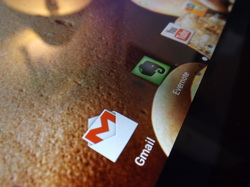 The S2110 has a lackluster screen resolution One of the downsides to the S2110 is its screen resolution. The S2110 has a pixel resolution of 1280 x 800 with 149 ppi (pixels-per-inch). While text is easy to read and colors look fine, pictures look very blurry and app icons look quite fuzzy. While a resolution of 1280 x 800 looks good on screens that are 7-inches and lower, it is not very suitable for a 10-inch form factor
The S2110 also provides dual cameras. There is a rear-facing 5MP camera with LED flash, capable of recording 720p HD video, and a 1.3MP shooter on the front. Neither of the cameras will blow you away, but both take decent looking images
and are nice additions to the tablet. While I did not find myself using the rear-facing camera all that often, it is a nicely added extra.
Lenovo promises around 10 hours of battery life and 20 hours of juice when the tablet is in it’s keyboard docking station. In my testing of the device, I got around 8-9 hours of use with about 18 hours when the S2110 was inside it’s docking station. Overall, I was very pleased with the battery performance of the tablet.
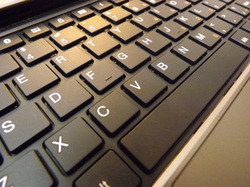 The keyboard feels exceptional to type on One of the biggest selling points of the IdeaTab S2110 is it’s optional keyboard docking station. The keyboard provides a surprisingly comfortable typing experience. I was a bit worried at fist that the keyboard would feel cramped to type on, but keys are spaced out very nicely and provides a very comfortable typing experience. The keyboard dock also adds 2 full USB ports and a full sized SD card slot to the S2110. One of my favorite aspects of the docking station though, was that it can double the tablet’s battery life. When the docking station is charged, acts as a second battery for the S2110 and, in our testing, extended the battery life up to 18 hours of use.
Software 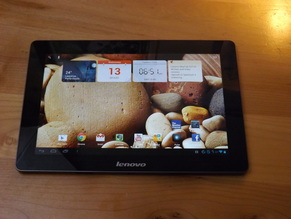 Android 4.0 layered with Lenovo's custom skin The Lenovo IdeaTab S2110 is running on Android 4.0 ICS. While 4.0 is not a terrible version of the Android OS, it is marred by Lenovo’s custom skin they have layered over it. I’m not sure why, but the skin that Lenovo layered over Android makes swiping through your home screens and applications an incredibly slow process and bogs down the entire experience. Most of this is probably due to the 3D cube transition effect that Lenovo is present on your home screens and application drawer. You can disable this effect, but it does not make the process any faster. The S2110 is also loaded with an incredible amount of bloatware. Such applications include Vendetta Online, Amazon, Audible, Zappos, Solitaire, News Republic, Evernote, and more. While some of these are useful to have on the device, none of them can be uninstalled from the device. They will always be there to eat away at your precious internal memory.
Thankfully, Lenovo does have some widgets that I found to be quite useful. For example, Lenovo's weather widget displays the current temperature in your area. Tapping on the widget will expand it a touch to reveal a 3 day forecast for the weather in your area. Lenovo's note taking widget displays your latest notes you have taken. Tapping on the widget also expands it an allows you to type a new note without having to actually leave your home screen. While it doesn't sound like the most exciting feature out there, I actually found it to be quite useful in my day to day use of the device. Final Verdict The Lenovo IdeaTab S2110 is not a bad Android tablet. It has a great design, good processing power, and an excellent keyboard docking station. Unfortunately, it’s price point is far too high for the features it brings to the table. On Amazon.com, the Lenovo IdeaTab S2110 with the keyboard docking station is selling for $499. You can currently pick up the Asus Transformer TF300 with it’s keyboard docking station for only $438.98. The Transformer TF300 offers more
powerful processors, a higher resolution screen, Android Jelly Bean support, and more for less money. If it was priced lower, the Lenovo IdeaTab S2110 would be a great competitor in the convertible, Android tablet market. Unfortunately, it's high price point makes us wonder why you would purchase it when you can get higher end devices that are very similar to the S2110 for less money.
Score: 10/10 (Outstanding) Pros: Beautiful design, strong build quality, incredible processing power, 13MP camera captures downright gorgeous pictures. | Cons: Glass on back of the phone is a fingerprint magnet, still runs Android 4.0 (update to 4.1 soon though), not everyone will like LG's Optimus 3.0 UI. | Design/Build Quality The LG Optimus G is easily has the best design of a smartphone I have tested to date. The Optimus G looks and feels like the premium device it is with it's 4.7-inch screen with Corning Gorilla Glass 2 and glass backing. The Optimus G is also very slim and lightweight with a width of 2.71" and weighing in at only 5.11 oz. The Optimus G feels downright fantastic in the hand and is one of the most premium feeling handsets I have ever tested. The Optimus G also has a very strong build quality. Corning Gorilla Glass 2 is one of the strongest displays available for smartphones out there. After my 2 weeks with the device, there was little to no visual signs of wear and tare. My only real complaint with the build quality of the Optimus G is the glass backing. While it is extremely durable, it attracts a ton of fingerprints. After cleaning the device with an alcohol wipe, the back was loaded with fingerprint marks within a matter of minutes. Aside from that though, I could not find anything wrong with the design or build quality of the device. The Optimus G is already off to a fantastic start. Hardware One of the many highpoints of the Optimus G is it's processing power. Under the hood is a 1.5GHz quad-core Qualcomm SnapDragon S4 Pro processor and 2GB of RAM. What does that mean? It means that this thing is a processing beast. The Optimus G will be able to keep up with everything you throw at it, and then some more after that. The Optimus G was able to keep up beautifully with everything I ran on it and, no matter how hard I tried, I could not make the phone slip under pressure. 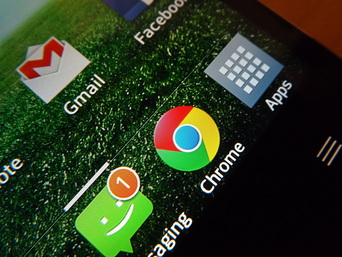 The Optimus G has a great looking screen Along with it's incredible processing power, the Optimus G also packs in an equally impressive display. The Optimus G has a True HD IPS screen with a resolution of 1280 x 768 with 318ppi (pixels-per-inch). While it is true that there are smartphones out there with higher resolution displays, the Optimus G still has a gorgeous looking screen. Colors are extremely vibrant, text is easy to read no matter how far your are zoomed in, and everything on it just looks plain great.
When reviewing a phone, it can be hard to overlook how the actual "phone" part of the phone operates. Thankfully, the Optimus G has fantastic call quality. Everyone I talked to said that I sounded great and the same goes for the individuals that I talked to on my end. Sprint does not have the best coverage in the area that I live in, but when I tested the device out in a couple different locations, I received excellent coverage. While the Optimus G is an LTE capable handset, I was only able to receive 3G data speeds. Again, this is due to my location and will vary by the destination of which you live. 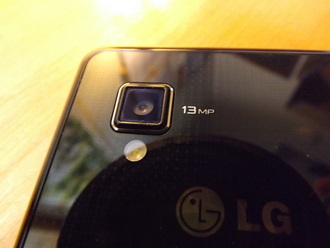 There are two version of the Optimus G. The model on AT&T has an 8MP rear-facing camera and the Sprint version has a 13MP rear-facing camera. Wanting to review the absolute best of the two versions, I reviewed the Sprint model. Boy am I glad that I did. The 13MP camera takes downright breathtaking photos. Images are extremely detailed and look great even when zoomed in all the way. The flash also does a great job at providing a good deal of light when needed, but not being too harsh and overpowering. The 13MP shooter is also capable of capturing 1080p full HD video. The videos I recorded with the device turned out great as well and looked just as clear as the still images. Unfortunately, I had to ship out the Optmus G before I was able to upload the photo samples to the written review. Thankfully, you can still view the sample pictures that I took in my video review of the product on our YouTube channel.
The LG Optimus G has a 2,100 mAh battery inside of it's beautifully designed body. With moderate to heavy usage of texting, video streaming, playing games, etc., I was able to get around 11 hours of usage time. By today's smartphone standards, 11 hours of usage is a huge amount of time. During my time of testing the devices, I was actually able to get through two entire days without having to charge the handset. Very impressive if I do say so myself. Software One of my very few issues with the Optimus G have to do with it's software. The Optimus G is currently running Android 4.0 ICS. Even though Android 4.1.2 Jelly Bean is scheduled to hit the Optimus G within the coming months, the handset is still running on the outdated Ice Cream Sandwich. Although features such as Google Now and "Project Butter" are currently not present on the deice, LG's Optimus 3.0 UI provides plenty of additional features to keep you happy with an outdated version of Android. 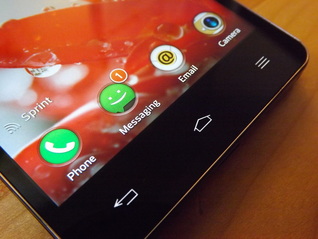 Optimus 3.0 brings tons of new features One of my favorite parts of the Optimus 3.0 UI is the ton of customization options that LG makes available to you. From quick access to apps straight from your lock screen, to changing the transition effect when swiping through home screens, to viewing your home screen in a landscape view, and more, LG puts a very strong focus on customization with the Optimus 3.0 UI. While I personally loved all of these added features, many users may feel that LG's UI looks and feels a bit cartoony and childish when compared to stock Android. This is completely true, but it does not affect the overall user experience.
Final Verdict As you can see, the LG Optimus G is a truly outstanding product. From a beautifully crafted design, unprecedented processing power, long lasting battery life, high quality cameras, and more, the Optimus G packs everything you've ever wanted in an Android handset into one awesome device. If you're looking for a new Android phone and want the best that money can buy, look no further than the Optimus G. While not everyone will be a fan of LG's cartoony Optimus 3.0 UI, you will learn to love it with such a powerful and beautiful device as the LG Optimus G.
Score: 9/10 (Fantastic) Pros: Captures beautiful still images, strong build quality, unbeatable price tag. | Cons: Short battery life, hardly any image filters. | The Fujifilm FinePix S4200 is a digital camera that originally came out back in January. The FinePix S4200 is an extremely solid point-and-shoot camera that is well worth it's very small price tag. Design/Build Quality The S4200 is technically a point-and-shoot camera but it has the body of a DSLR. It has a very nice rubber grip which feels very sturdy in the hand. On the front of the camera we have got our light sensor and 24mm wide zoom lens with a
24x optical zoom. On the top, we can find our zoom adjuster, face detection and continuous picture buttons, power switch, image quality button, shooting settings wheel, and our LED flash. Going to the back of the device we find our 3-inch LCD screen and to the right of that we have a ton of different setting and menu controls from flash, macro, shutter speed aperture, timer settings and more. One thing that I really liked on the S4200 was its Electronic View Finder which can be found just about the LCD screen. At first, I didn't really see a need for the EVF but, after taking numerous pictures outdoors, I found the EVF to be very useful for being able to get a clear image of what your camera lens is seeing even if the sun is out. The LCD is fine but it gets very hard to see outdoors with the glare of the sun. I actually found myself to use the EVF even when I was indoors simply because I just felt that I could get a better idea of what my pictures would look like through the EVF. On the left we have got our one and only set of speakers which sound pretty weak and on the right we have got both miniHDMI and MicroUSB ports. On the bottom we have our battery slot and microSD card slot.
Overall, the S4200 feels like a very sturdy device. Most of the buttons feel very responsive but the menu directional pad does not give a whole lot of touch feedback and feels a little flimsy at times. My only other gripe with the build quality of the S4200 is that it can be a bit tricky to close the door the batteries and microSD card slot. You have to put a good amount of pressure on the hatch and pull the little switch at the same time to close it. The first time I tried doing this, it took be about 2 whole minutes before I successfully closed it. Even after a little less than a month of owning the camera, I still have trouble with this from time to time.
Hardware 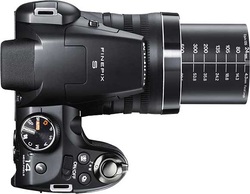 The S4200, while it may not be the fastest point-and-shoot on the market, it certainly isn't the slowest of the pack either. It takes only 1.8 seconds to turn on the camera and take a picture and that doesn't suck at all. It took me 10.24 seconds to take 5 pictures simultaneously which roughly translates to a total time of 2 seconds to take one picture. With these stats in mind, the S4200 is considerably fast but may not be for you if you need a camera to take a lot of pictures in a very short amount of time. For the average consumer though, the speed performance of this camera should be just fine for you.
The FinePix S4200 has an optical sensor resolution of 14MP and can capture images at up to 4288 x 3216 pixels. Translation: This thing can take freaking gorgeous pictures.
Along with the 14MP image quality, the S4200 can also record video in up to 720p HD. Videos looked good when outdoors and with an ample amount of sunlight, but looked quite grainy when indoors.
Software If you are a huge fan of having tons of filters to add to your pictures on your camera than you really should look elsewhere. The only filters you will find on the S4200 are black and white and retro. Strangely enough though, I found no difference whatsoever when using the retro filter versus not having any filter on so you really just have the option of normal and black and white. The S4200 does make up for its lack of filters in customization of shooting settings. The S4200 offers face detection, date stamp, red eye removal, blink detection, custom background color of the menus, and more. One of my favorite features is the blink detection. With this turned on, after you take a picture of one or more people, the camera will alert you if someone in the picture blinked and will ask you if you would like to take a retake. I really applaud Fujifilm for including this feature because it will help out a whole lot when trying to take a family photo or any other picture with a large group of people. It is also very easy to navigate through the menus on the camera. They are not pretty and don't have any cute graphics or anything of the sort but, instead they are listed out in a very simple and easy to understand structure Final Verdict The FujiFilm FinePix S4200 is a wonderful camera. It takes beautiful pictures, good outdoor video, has a great design, and offers tons of custom settings while still being very simple to use. Cons such as the sub-par video and not perfect build quality to detract from the camera bu overall, for only $157, you would be crazy not to pick this one up.
Score: 7/10 (Average) Pros: Fast processing speeds, great cameras, Nokia's value added applications, excellent call quality.
| Cons: Ugly design, slippery back material, T-Mobile has poor data service, more expensive than higher end WP8 devices.
| If you are looking to get a Windows Phone 8 handset with T-Mobile's service, you don't really have a lot of choices. You can either get the Nokia Lumia 810 for $149 with a 2-year contract, or get the HTC 8X for $199 with a 2-year contract as well. While $149 is not a bad price for a WP8 device of this caliber, you can get both the Lumia 820 and 920 for less money. The 820 is essentially the same product as the 810, but has a better design, and the Lumia 920 has a larger screen with a higher pixel resolution, higher quality camera, better design, and longer battery life. If your heart is set on getting your new WP8 handset on T-Mobile though, I would go with the Lumia 810. Let's find out why. Design/Build Quality 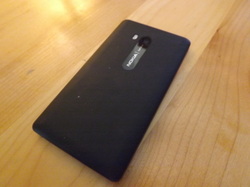 The back material is extremely slippery I'll come out and say it. The Nokia Lumia 810 is not a sexy device at all. The Lumia 810 is 127.8 mm tall, 68.4 mm wide, 10.9mm thick, and weighs in at 145 g. It's blocky, thick, and looks like a black brick. That's not to say that it doesn't work though. While it may not be the most appealing smartphone on the market, the design does work. Like all Windows Phone devices, the Lumia 810 has a physical camera launcher button. Unfortunately, I found that it was a bit flimsy. I found myself really have to apply a good amount of pressure to get it to function correctly. If you read my written review of the Nokia Lumia 820, you would know that I had an issue with the plastic material on the back of the phone. The Lumia 810 has the exact same type of back and it's still as slippery as ever. Aside from these issues, the Lumia 810 does feel like a sturdy device.
Hardware Thankfully, the Nokia Lumia 810 features some pretty good hardware specifications. Powering the Lumia 810 is a Qualcomm Snapdragon S4 1.5GHz dual-core processor and 1GB of RAM. The processing power if very capable and doesn't seem to skip a beat. There aren't a lot of graphically intense games available on the Windows Store so, I
wasn't able to test the processing capabilities as much as I can on Android devices. From the games and other tasks that I threw at the Lumia 810 though, it powered through just fine and is a high point for the device.
The Lumia 810 has a 4.3-inch screen with a resolution of 800 x 480 pixels and 217 pixels per inch. The screen delivers bright and vibrant covers and text is easy to read. However, if you've ever used a handset with a 720p HD or 1080p HD
screen resolution, you will be able to notice the lower screen resolution.
To last you throughout the day is an 1,800 mAh battery. While this sounds a bit low, I actually found that it was quite adequate. I got a total usage time of around 10 hours. Keep in mind though, this was with 2G network speeds running the entire time instead of LTE...
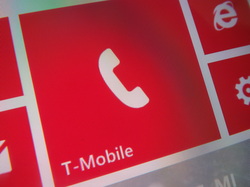 T-Mobile has poor data coverage ...which leads us into the next hardware issue. T-Mobile does not have good coverage (at least not in my area). In Lawrence, MI, I can get 4G data speeds with AT&T. With T-Mobile, I can only get 2G. With Verizon Wireless in Paw Paw, MI, I can access LTE data speeds. With T-Mobile, I can still only get 2G even though the Lumia 810 is LTE capable. While service is going to vary by area, I was very disappointed with T-Mobile's data network. Thankfully, the call quality was great on both ends of the Lumia 810. Everyone sounded great on my end and everyone I talked to said I sounded great to them as well.
The Lumia 810 has an 8 megapixel camera on the back with LED flash and a Carl Zeiss lens. On the front is a 1.3 megapixel shooter. Both cameras take great looking pictures. Both picked up colors nicely and very accurately as well.
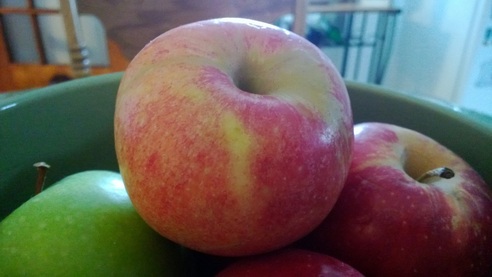 Rear-facing camera shot  Front-facing camera shot Software Like all of Nokia's latest Lumia devices, the Lumia 810 is running Windows Phone 8. Ever since my review of the Lumia 820, I have had a special place in my heat for Microsoft's latest mobile operating system. Everything runs buttery smooth, apps have a nice WP look and feel to them, and Live Tiles bring you live and relevant information. Everything runs so great and everything looks absolutely fantastic.
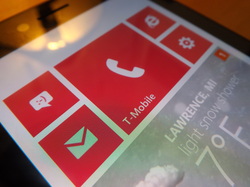 WP8 looks and feels superb One of the coolest features in WP8 is Kid's Corner. If you have a smartphone and you also have a kid, it's easy to assume that your little angel always wants to play with mommy or daddy's phone. While you want to do whatever you can to make your kid happy, you really don't want them to send your boss an email, update your Facebook status, etc. Thankfully, WP8 has Kid's Corner. Kid's Corner allows you to control what your child has access to on your phone. You can choose what apps you kid can access, allow them to customize their colors and change their profile picture. Kid's Corner is essentially WP8 for the kiddos. The Nokia Lumia 810 also has all of Nokia's great value added applications. These include Nokia City Lens, Nokia Maps, Nokia Music, and Nokia Transit. Here's a little breakdown of what each app can do for you:
- Nokia City
Lens: Shows business, hotels, points of interest, etc., in your area
through an awesome augmented reality feature through the rear-facing camera
lens.
- Nokia Maps: Nokia's
answer to Google Maps. Probably the best mapping app you can get for a WP
device.
- Nokia Music: Nokia's own
music streaming service. Even allows you to save entire custom stations for
offline listening.
- Nokia Transit: Helps you
get to where you need to go in your area. Shows different public transit routes
in your area.
All of these apps are exclusive to Nokia Lumia products and really differentiate Nokia's offerings from other WP8 devices such as the HTC 8X.
Final Verdict For $149, it's hard to recommend the Nokia Lumia 810. The Lumia 820 and 920 are both better devices and both cost less as well. While the HTC 8x is a slimmer device and offers a sexier design, the Nokia Lumia 810 is still a better choice if you want to get a WP8 handset with T-Mobile's service thanks to Nokia's value added applications.
Score: 7/10 (Average)
Pros:
Lots of screen real estate, 4:3 aspect ratio is great for browsing the Web, strong battery life, 4G LTE, LG Optimus 3.0 includes tons of customization options. | Cons: 4:3 aspect ratio may be cumbersome for some and
causes letterboxing when watching video content, dual-core processors aren't the fastest out there, Android 4.0, mediocre call quality. | Big displays seem to be the rage of smartphones nowadays. A year ago, a 5-inch display on a smartphone seemed ridiculous. Now, we look down upon smartphones if they have a screen that's smaller than 4-inches. The smartphone market is constantly moving forward to bigger screens on our favorite little gadgets. If this describes you at all, then the LG Intuition might just be the smartphone for you. The LG Intuition originally had a global release in early 2012 as the LG
Optimus Vu. We got the handset here in the U.S. in September last year as the LG Intuition. You can currently pickup the Intuition for $99 on Verizon Wireless with a 2-year contract. The Intuition comes in at a affordable price point but, are you better off with spend the extra money and getting the Samsung Galaxy Note II for all of your phablet needs? Lets find out.
Design/Build Quality 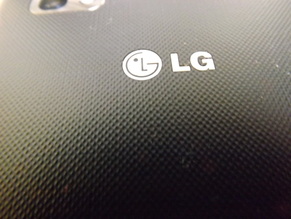 The LG Intuition certainly has one of the oddest designs we have ever seen in smartphone. Unlike most smartphones, the LG Intuition's screen has a 4:3 aspect ratio instead of 16:9. This means that you will have a full screen view on the Intuition instead of the widescreen view that is on most smartphones today. This is great for browsing the web and reading digital magazines but, it also means that you will get a lot of letterboxing when streaming any video content. The 4:3 aspect ratio also causes some applications to look stretched out and ugly. Most, if not all, apps on the Google Play store are designed to run on a 16:9 aspect ratio. LG allows you to calibrate the aspect ratio when using an app or game to adjust it to fit on the screen better though. While certain games like Temple Run and apps like Facebook looked fine, others such as Angry Birds
did not look good at all of the handset. The awkward ratio also makes the Intuition a little awkward to carry around with you and put in your pocket. I have relatively large hands and I still can't wrap my entire hand around the device. If you have smaller hands, the Intuition is going to be a bit of an annoyance to operate because of it's odd aspect ratio. With that said, the LG Intuition is actually very lightweight weighing in at only 6.08 ounces and only 0.33-inches thick. The back of the Intuition is made of plastic and has a textured, grainy feel to it. While this is probably a big help in making the device so light, it also gives it a cheap feel.
Hardware The Intuition has a 1.5GHz dual-core processor and 1GB of RAM to help it power through all of the apps and games that you through at it. Although quad-core is the rage when talking about mobile processors, I was actually pretty impressed with the performance of the Intuition. Browsing the web was smooth, games ran great, and steaming video content is a breeze.
The Intuition's screen resolution is 768 x 1024. While we are seeing 1080p HD displays on more and more smartphones, the screen doesn't look bad at all. Text was very crisp and colors were all nicely saturated. 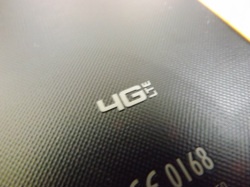 Verizon has great LTE coverage The LG Intuition has 4G LTE capabilities and Verizon's LTE network is one of the best out there. In Paw Paw, MI, a small town in southwest Michigan, I was able to get steady download speeds of 15mbps and upload speeds of 10mbps. Call quality is a bit of a different story though. People's voices on my end were perfectly audible but, sounded muffled and
turning up the volume will only decrease the quality. However, people on the other end said I sound crystal clear and as if I was standing right next to them. The external speakers of the Intuition are nothing to write home about. They are very dim and are very disappointing.
The Intuition packs in a 2,080 mAh battery. I got a total usage time of about 10 hours with moderate web browsing, playing games, streaming video content, making calls, and texting. This is most likely because I live in an area, Lawrence, MI, where 3G data connections are the only available data speed with Verizon. If you live in an area with strong 4G LTE support, you may find that the battery life does not last as long since LTE tends to drain batteries faster than 3G and standard 4G.
The LG Intuition has a rear-facing 8MP camera with LED flash. It takes good pictures but, you can definitely find better cameras on other handsets out there. The Intuition also features a front-facing 1.3MP camera. For taking profile pictures and video chatting, the front-facing camera won't disappoint. I was actually pretty impressed with it's image and video capture considering it is only 1.3MP. LG also includes some nice added features in their camera app. One of my favorites was the option to take pictures by saying "cheese" out loud.
 The rear-facing camera takes very detailed pics 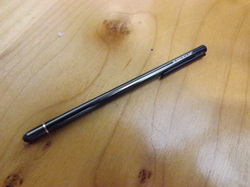 The Rubberdium stylus feels great in the hand One of my biggest hardware issue with the Intuition is the stylus. While the stylus itself feels sturdy and comfortable in the hand, there is no option to hold the stylus internally in the handset. This greatly detracts from the portability of the Intuition because, if you want to take it's stylus with you, you will be forced to keep it in a safe place and retain from loosing it. This may seem like a small issue to a few of you readers but, after using the Intuition for 2 weeks, you just want to leave it's stylus at home so you don't have to deal with the responsibility of not misplacing it.
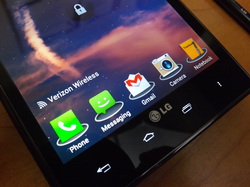 Optimus 3.0 brings welcome additions The Intuition runs Android 4.0.4 Ice Cream Sandwich with LG's Optimus 3.0 UI layered over it. The Optimus UI does not get in the way of day-to-day use but, while I prefer vanilla ICS, Optimus 3.0 is not an ugly UI. It does also offer some welcome customization options that
stock ICS does not offer. Optimus 3.0 allows you to change the transition effect when swiping between home screens and change icons of apps as well. You can also add up to 5 app icons on your locks creen and open them by sliding over their icon. I am a huge fan of customization on my phone and greatly appreciated these added goodies. Optimus 3.0 also includes LG's note taking software, QuickMemo. QuickMemo allows you to take a screen capture of your handset and edit it as you please, as well as a standard blank piece of paper to take notes on. You can access QuickMemo through the app screen or, on the Intuition, by clicking the physical QucikMemo launcher on the top of the device. I played around with QuickMemo for a bit and, while it is connvinient to have a note taking feature built into your phone, I still found that I tended to use apps like Evernote when I need to make a note of something.
With all of LG's Optimus 3.0 UI features on top of ICS, there is no denying that this is an outdated version of Android. You will not find "Project Butter", Google Now, improved notifications, or Quick Settings on the Intuition. While it ran smoothly, I still noticed the infamous Android lag present in the device. The lack of Google Now and the improved notifications and also a downer since they enhance the Android experience so much, as well as all of Jelly Beans other
fantastic features. There is also no official word from LG as to when the Intuition will be receiving Jelly Bean so, if you want to get a new phone with the latest and greatest from Android, you may want to look elsewhere.
Final Verdict The LG Intuition is not a bad handset. If you favor larger displays on smartphones and are looking to get into the phablet market, the LG Intuition is certainly not a bad choice. However, it is extremely hard to overlook the Samsung Galaxy Note II with the vastly superior S Pen, Android 4.1 Jelly Bean, quad-core processor, and larger screen. While the Note II is truly superior to the Intuition, it is a lot more expensive at $299 with a 2-year contract. The Intuition is selling on Verizon for only $99 with a 2-year contract, an entire $200 less than the Note II. If you are in the market for a phablet on Verizon and don't want to spend an arm and a leg, the LG Intuition is a great choice. Although the device is running an outdated version of Android, has dual-core processors, and does not have an option to store it's stylus internally, it is still a great choice. It's price point of only $99 doesn't suck either. If you need a new phablet right now and can't wait for the Note II's price to come down, go for the LG Intuition. If you aren't in a hurry though, you may want to wait for some deals on the Note II to come up to ensure that you get the best phablet currently out there and, at a reasonable price.
Score: 8/10 (Great) Pros: Fast processing speeds, Live Tiles are fantastic, WP8 is smooth as silk, design isn't anything new but it works really good, rear-facing camera took really good photos.
| Cons: Microsoft Store has a noticeable lack of apps, screen resolution won't impress anyone, material used on the back of the phone is too slippery, front-facing camera is extremely grainy. | Windows Phone 8 is finally here and it one word, it is truly awesome. One of the largest manufacturers of Windows Phone 8 devices is Nokia. Their latest flagship device is the Nokia Lumia 920 which is only available on AT&T. They did however release another Windows Phone 8 device on AT&T which is called the Nokia Lumia 820. The Lumia 820 is considered to be a mid-range device by both Nokia and AT&T. While it certainly doesn't pack in all the features of the Nokia Lumia 920, it really does feel like a very high quality phone. The Nokia Lumia 820 is currently selling at AT&T for only $50 with a 2-year contract. At that price, is the Nokia Lumia 820 a good deal? Or should you pay an extra $50 and go all the way with the 920? Let's find out.
Design/Build Quality
Personally, I really liked the design of the Nokia Lumia 820. Sure, it looks like your standard black smartphone design but, it feels like a really great, high quality handset. With a thickness of 9.9 mm and weighing in at 160 g, the Lumia 820 is on the chunky side when it comes to smartphones. Although the Lumia 820 is heavier and thicker than most current handsets, it actually felt really great to hold and I didn't mind the extra weight at all. On the front of the device, you will find your 4.3-inch screen with a resolution of 800 x 480. Above that is the Lumia 820's VGA front-facing camera. Below the screen is the standard Windows Phone back, home, and search capacitive touch buttons. On the back of the phone is the 8MP camera with LED flash and Carl Zeiss lens. On the right, is the volume rocker, power/lock button, and dedicated camera launcher. On the top you have a 3.5 mm headphone jack and on the bottom you will find your standard micro-USB syncing/charging port.
The design for the Lumia 820 is nothing we haven't seen before but, it works great. While the weight and thickness of the phone may scare off a few people, it did not bother me one bit. One design aspect that I didn't like at all of the phone was the texture on the back of the device. It is a plastic material but, it is extremely slippery and will cause you to drop the 820 a few times like I did. Also, after about 5 days of use with the 820, I found a small scratch on the right-hand side of the screen. I had not exposed the phone to anything that could cause a scratch to the screen and I am still trying to figure out how it got there. The Lumia 820's design does not bring anything new to the table but, it works pretty good. Although it has a couple build quality issues, overall, the design works out just fine.
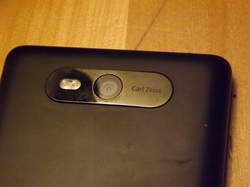 Hardware
For a mid-range phone, the Nokia Lumia 820 actually packs some pretty impressive specs. Under the hood, you will find a Qualcomm Snapdragon S4 1.5GHz dual-core processor, 1GB of RAM, and 8GB of internal storage. Overall, the Nokia Lumia 820 is a pretty snappy device.
Swiping your homescreen, web pages, and apps is extremely smooth and fluid. All of the games that I tested also ran great with no lag whatsoever.
The 4.3-inch screen has a resolution of 800 x 480 which looks alright. Live Tiles are vibrant and colorful but, zooming in on text will reveal the screen resolutions weakness.
The Nokia Lumia 820 also features 2 cameras. The rear-facing one captures images up to 8MP and records videos up to 1080p HD. The front-facing one captures pictures and videos in a VGA resolution. The rear-facing camera took really good pictures, especially when you consider the price. The front-facing one however, was quite grainy and failed to
impress.
 The Carl Zeiss lens picks up colors quite accurately. Not washed out or oversaturated.  The front-facing camera actually takes some pretty crappy pictures. The call quality of the Nokia Lumia 820 was great. Everyone I talked to with the phone said that I sounded like I was standing right next to them. The voices of people I talked to also sounded great on my end as well.
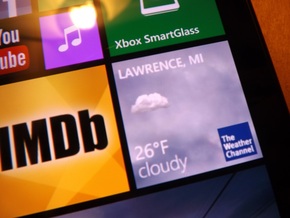 Live Tiles bring you live, relevant information Software
The Nokia Lumia 820 runs Windows Phone 8. Windows Phone 8 just came out this past October and it is a really beautiful operating system. The biggest feature of Windows Phone
8 is Live Tiles. This was first introduced in Windows Phone 7 and since then, it has been one of the main selling points of Windows Phone devices. Live Tiles are constantly updating with live information that is relevant to your interests (For example, The Weather Channel Live Tile will show the temperature in your area and your location on a mini radar). It is an ingenious idea and it works beautifully. A new addition to Live Tiles in Windows Phone 8 is the ability to resize the Tiles. This feature has been asked for ever since Windows Phone 7 and we finally have it with Windows Phone 8. You can resize all Tiles to a small and medium size with certain Tiles supporting a wide option.
Customization is always a huge thing that I look for in my tech. Thankfully, WP8 offers a very broad level of
customization. While Android may technically be the most customizable mobile OS out there, I found that WP8 offered a more personal level of customization. Because of the ability to resize Live Tiles, the fact that Live Tiles are always showing relevant information for you, and that you can change the theme of the phone, I really felt like I could make the Nokia Lumia 820 my own device. After you fully setup your WP8 device to your likings, you really feel like it is a little window into your life.
Another huge plus on Windows Phone 8 is how smooth it is. Sliding through your homescreen, apps, and web browser are all buttery smooth operations and feel absolutely wonderful. While it is true that part of this fluidness is due to the dual-core processors, a larger part of it is thanks to the way WP8 operates.
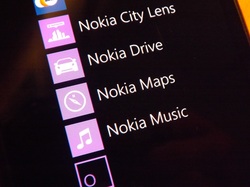 The Nokia Lumia 820, as well as all of Nokia's WP8 products, comes loaded with value added applications that Nokia has added onto their phones. These include Nokia City Lens, Nokia Drive, Nokia Maps, and Nokia Music. City Lens is this awesome augmented reality app that displays businesses and places of interest in your area through your camera lens. Drive is Nokia's own turn by turn navigational app and Maps is Nokia's own mapping service. Both of these work great together and it is some of the best mapping software you can get for a Windows Phone device. Music is basically Nokia's answer to Pandora and iHearRadio. I am a huge Pandora fan but, since there is no Pandora app available on the Microsoft Store, I resorted to using Nokia Music for my music streaming needs. Surprisingly enough, I found myself really enjoying my time with the app. Nokia crafted a really great music streaming service and is the best you will find on the Microsoft Store. All of these value added apps that Nokia adds to their WP8 phones is a huge selling point. Nokia is putting it all of the line with Windows Phone and they want you to purchase one of their phones if you are getting a WP8 device. Because of these apps that Nokia includes with their phones, it really helps narrow down the completion and makes you feel silly to purchase a WP8 device that isn't manufactured by Nokia.
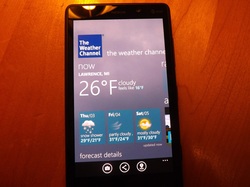 Apps on WP8 have a clean, modern feel The way that applications are presented to you in WP8 is one of the things that I found I loved most. All applications have a WP look and feel to them (similar to how many iOS apps have an iOS look and feel to them). I found that many apps such as iMDB, The Weather Channel, Evernote, etc., were presented much more organized in WP8 than they were in Android. Everything in WP8 feels very clean and modern and it really gives the phone a great identity.
One of the biggest issues I had with WP8 though, was the lack of developer support in
the Windows Store (Microsoft's app store). There are only 150,000 apps available to download in the Windows Store and that is a significantly smaller selection than the app stores offered by both Apple and Google. Even though Windows Phone is younger than iOS and Android, it needs to get a larger selection of applications if it wants to have a chance of getting to where Android or iOS is right now. Many consumers purchase a phone based on the app selection available. As Android gathered more developers to develop apps for them, more people bought Android devices. At the current state Windows Store is in, it feels a lot like how the Android Market was before it became Google Play. While the apps are categorized into different sections, it feels like you are digging through a pile of garbage in hopes of finding a high quality app. One of my biggest complaints for Windows Phone though, is the fact that there are no apps for Google services. This means no apps for Google Search, YouTube, Maps, Blogger, Translate, etc. I understand that Microsoft wants people to use Bing as their search engine but, offer your users some choice. Until you can fix Bing and make it not so terrible, give me the choice to use Google Search. While mobile versions of YouTube and Blogger are functional, a dedicated app for these services would be much more fluid and easy to use.
Final Verdict For $50, the Nokia Lumia is a great deal. However,if you don't mind spending an extra $50, the Nokia Lumia 920 offers a better design, a larger screen with an HD display, and longer battery life. Both the 820 and 920 are great choices if you are looking to get a WP8 device with AT&T's service. If you want to get into the WP8 market but want to spend as little cash as possible, go with the 820. It offers many of the great features found in the 920 and feels like a well crafted piece of tech. If you want to get your hands on a WP8 device but don't mind spending a little more cash, go for the 920. It offers all of the features found on the 820 but, improves on many of them and even has some ones you won't find on it's younger brother. In the end, it is going to come down to a matter of price. Both of these phones are great choices but, as I said, the final decision of what Lumia to get will come down to the matter of how much you are willing to spend.
|



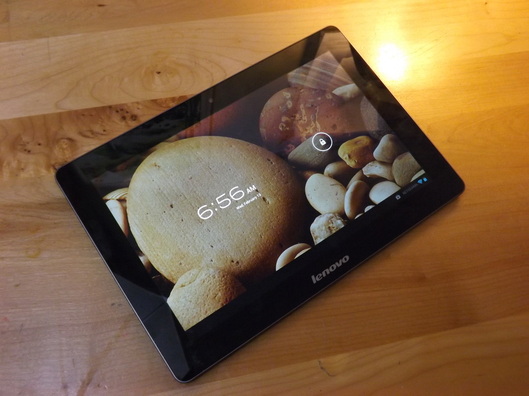
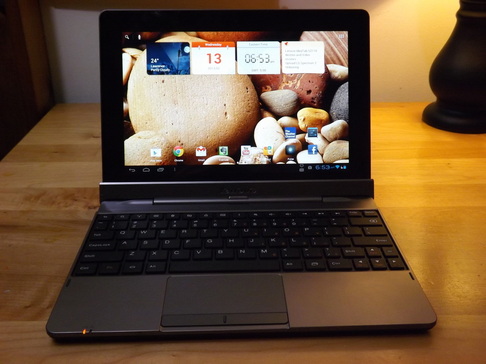
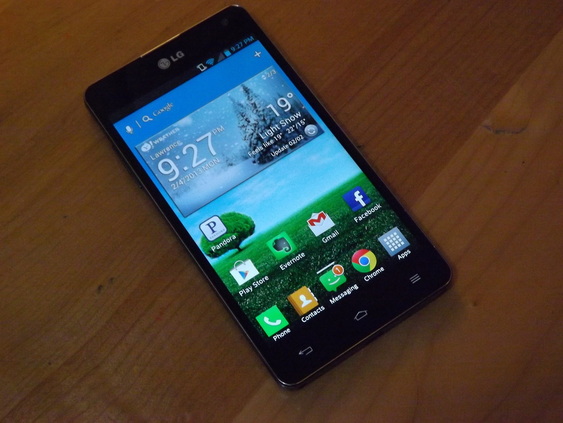



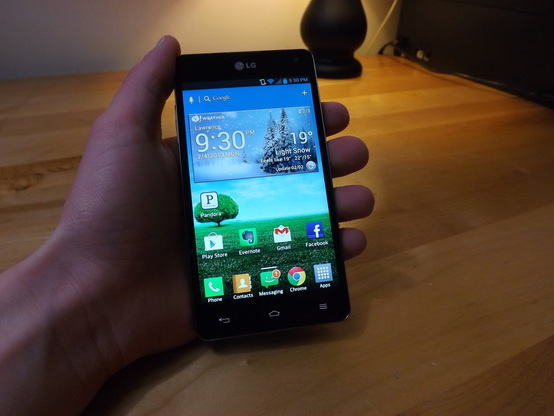
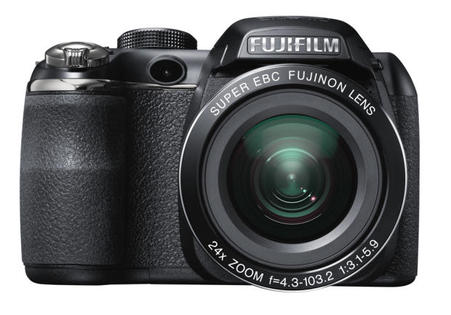

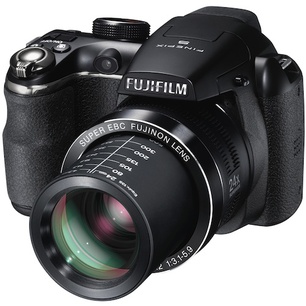
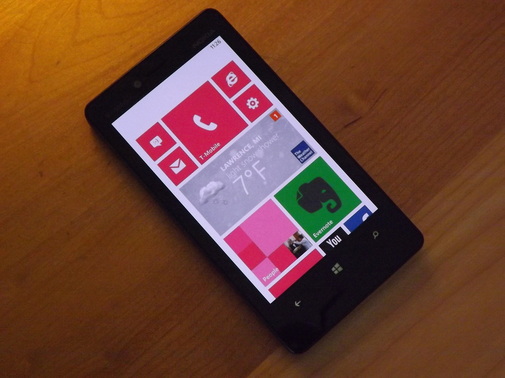






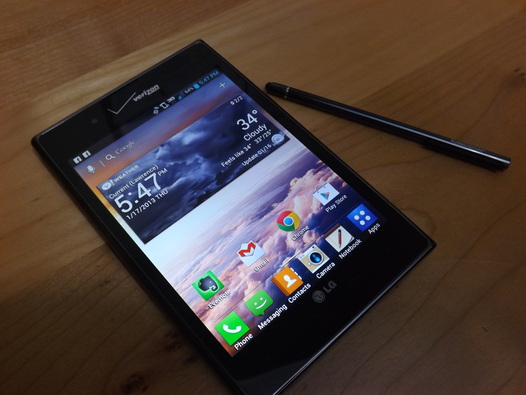





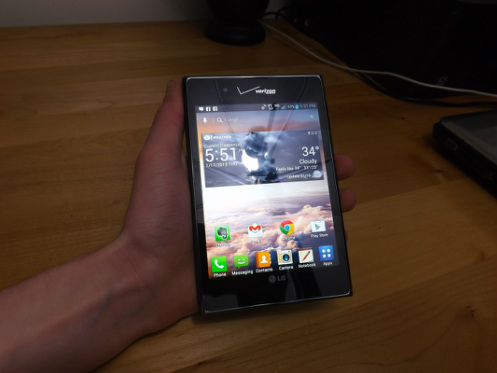
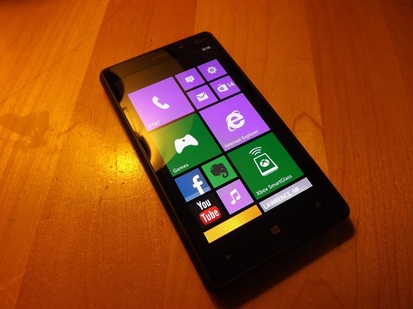






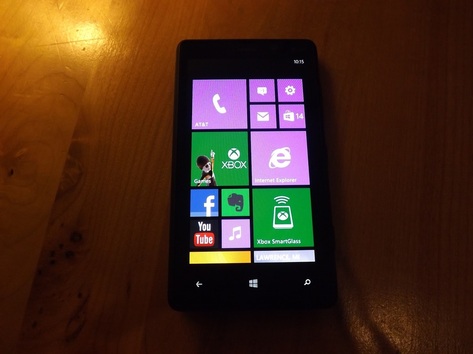
 RSS Feed
RSS Feed